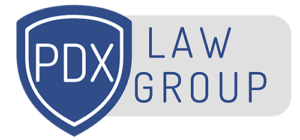Chapter 7 “straight bankruptcy” and Chapter 13 “adjustment of debts” can prevent you from harm when you decide to close down your business.
My blog post last week explained how to save your sole proprietorship business through a Chapter 13 case. But now let’s assume that you’ve instead made up your mind to close down that business. And let’s also assume that you need bankruptcy relief because of the unmanageable amount of debts you are personally liable for.
Many, many considerations come into play in deciding on your best course of action, but let’s focus here today on two main ones—assets and debts—as we consider three options: 1) a “no asset” Chapter 7 case, 2) an “asset” Chapter 7 one, and 3) a Chapter 13 case.
“No Asset” Chapter 7 Gets You a Fast Fresh Start
Once you decide that your business is not worth keeping alive, you may just want to clean up after it as quickly as possible. For that a “straight bankruptcy” may well be the best way to go.
If everything that you own—from both your business and you individually—falls within the allowed asset exemptions, then your case will more likely be relatively simple and quick. You will have a “no asset” case—one in which you keep everything you own and nothing goes to the Chapter 7 trustee to liquidate and distribute among your creditors.
A “no asset” Chapter 7 case is usually completed from start to finish in three or four months. And if none of your assets are within the reach of the trustee, there is nothing to liquidate and then distribute among your creditors. Because the liquidation and distribution process can take many additional months, avoiding that usually shortens and simplifies a Chapter 7 case greatly.
However, this assumes that all your debts can be handled appropriately in a Chapter 7 case. Specifically, the debts that you want to discharge (write off) would in fact be discharged. And those that would not be discharged are ones that you are able and willing to pay. The debts you want to pay may include secured debts like vehicle loans and mortgages; debts you are able and willing to pay—after discharging the rest of your debts—may include certain taxes, support payments, and maybe student loans.
Asset Chapter 7 Case as a Convenient Liquidation Procedure
If you do have some assets that are not exempt—not protected from the trustee—Chapter 7 may still be a good option. Assume that those unprotected assets are ones that you can do without—and maybe even are happy to be rid of, like assets from your former business that you no longer need. Letting the bankruptcy trustee collect and sell them and distribute the proceeds among the creditors instead of you going through that hassle may be a sensible, convenient, and fair way of putting your business behind you.
That may especially be true if you have some “priority” debts that the trustee would likely pay out of the proceeds of sale of your unprotected assets. For example, if you owed child or spousal support arrearage, or recent income taxes, those would likely be paid ahead of your other creditors. Your Chapter 7 trustee would be paying debts that you would have had to pay anyway, and is doing so out of the proceeds of sale of assets that you don’t need. Not a bad deal.
Chapter 13 for Flexibly Addressing Special Types of Debts
Chapter 7 does not deal well with certain important kinds of debts. However, Chapter 13 gives you a 3-to-5-year program to pay all or part of those debts while you are protected from your creditors.
An example of an important kind of debt for owners of recently closed businesses is income taxes. Chapter 13 provides a way to potentially discharge (write-off) older taxes, pay off more recent taxes while being protected from the IRS and/or state taxing authority, and deal favorably with tax liens.
Chapter 13 can often also protect otherwise unprotected assets, for example the closed business’ assets that you now need as your tools or equipment for employment in the same field.
In the right circumstances Chapter 13 can save you thousands or even tens of thousands of dollars, while giving you protection from and a better way of dealing with important kinds of creditors.
